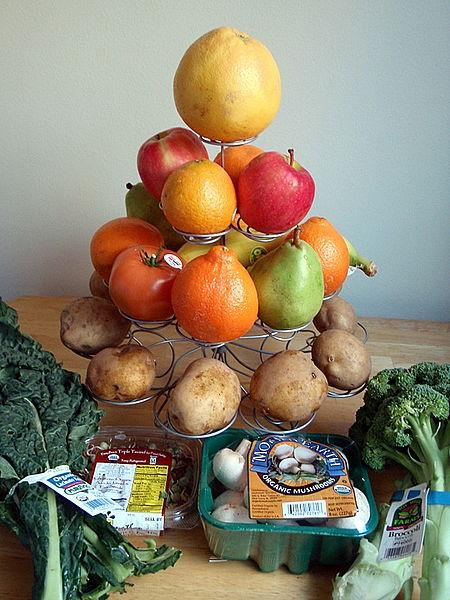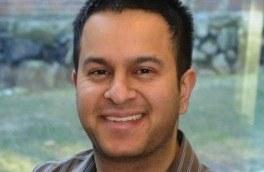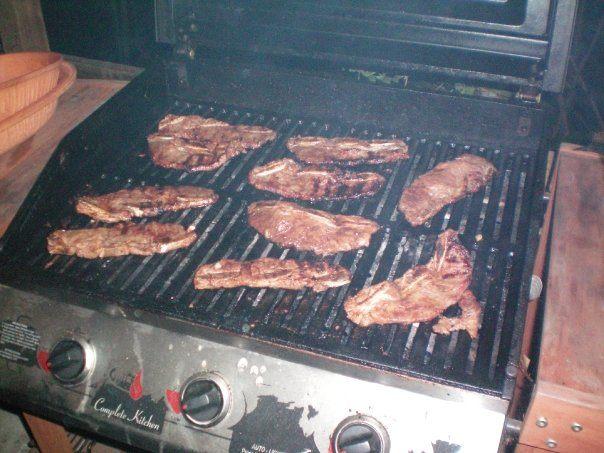Report: Shoppers Love Organic Food - Even If They Can't Tell What It Is


Now that the organic marketing concept has been around for a few generations, you'd think it would be easier to win consumers over. According to a recent survey by BFG Consulting it is. With the plethora of stores that now handle everything from organic bananas to pesticide-free, organically made canned food, today's shoppers have little problem tracking down that "back-to-basics" version in or around the produce isle.
The only thing is, do they really know what it is? Would they be able to explain what it is that makes it stand out from regularly grown food? According to BFG's research, not necessarily.
Only 20 percent of the consumers who participated in the survey could accurately tell researchers the fairly stringent requirements that define the organic food market, even though almost 70 percent of those who were surveyed said they bought organic products.
It's an interesting statistic, considering the fact that according to the USDA, organic purchases now represent 4 percent of food sales in the U.S. -- and is continuing to grow. Even more interesting is that a significant portion (93 percent) of those sales occur in supermarkets and natural food venues, where there's often plenty of dialogue about what makes organic food special. Another 7 percent of purchases occur at farmers' markets and locations where organic food is often sought out.
It also notes that organic premiums have remained high, even though the supply is much better than it was some years ago. Although that's a troubling statistic, it does corroborate BFG's finding that millennials are currently willing and able to return to the pesticide-free isle and pay more for organic foods.
And what drives their purchases is interesting as well: honesty.
"They desire honesty," notes BFG CEO Kevin Meany. "They want to believe."
Some writers have suggested that the trend to buy without knowing the product's actual source paints them as "easy to manipulate." But as we've highlighted in other posts, the millennial crowd is anything but gullible.
Sure, marketing has gotten ahead of them. The research also showed that 72 percent of those surveyed thought the term "organic" is overused and 75 percent figured it was a marketing tool - not a way of growing and producing food.
But marketing issues are a regular problem in food production A 2013 study of Canadian consumers revealed that the term "genetically modified organism" (GMO) isn't always understood, either. Yet the majority of West Coast Canadians surveyed this summer said they would support a ban against GMO foods.
The question of whether millennial shoppers can tell an organic apple grove from a conventional one really points to two things:
1. Consumer education is a continually evolving issue. As food technology changes, customers change, and the consumer's understanding of what makes that apple unique is dependent upon what information is at hand. That's why the anti-GMO proponents continue to have an uphill battle when it comes to getting labeling legislation pushed through: They must continue to educate consumers just as hard as they advocate for legislation and consumer initiative.
2. Consumer interest is self-generating. That's a plus for organic growers right now, because despite the plummeting stats when it comes to knowing what makes organic organic, there's still an increasing drive to purchase wholesome food and decrease additives they feel are harmful in large amounts. Both surveys suggest that consumers are willing to seek out and pay more for organic food. Whether it's because it sounds better than the stuff next to the organic isle or because they know the legislation that stands behind it are secondary issues that can be overcome by the first point, above.
Organic food producers have always known that maintaining a pesticide-free, stringently controlled market with a healthy consumer following wasn't going to be easy. Nutritionists who teach patients about healthy eating, the definition of a food pyramid and the many reasons for choosing that fresh fruit over a candy bar or a low-sugar alternative can sympathize with the marketing challenges. But maintaining an engaged consumer following takes more than putting it on the table or stacking the produce isle, and I think the organic industry knows that.
The question isn't what millennials know and can answer on a spot survey, but how the organic industry uses that information to ensure that generations of informed, educated and motivated consumers continue to grow.
Image: Joy
Green Mountain Power First Utility to Become a B Corp


The B Corp movement has picked up steam the last few years: Etsy, Warby Parker, Patagonia and Method [Ed note: and TriplePundit!] are some examples of firms that are combining good business with doing good. Over 1,000 companies have become certified by keeping the highest standards of transparency, environmental performance and social responsibility. They range from building contractors to professional services such as legal and accounting. But until this week, there was not a single utility in this group until Green Mountain Power Corporation (GMP) announced this week it is now a B Corp—the first utility in the world to score this certification.
Based in Vermont, GMP provides power to over 260,000 homes and businesses. The company has recognized that the role and business model of utilities are changing. To that end, GMP has worked with stakeholders across Vermont to develop new forms of energy beyond conventional fossil fuels.
Of the four areas that are paramount to B Corp certification (environment, employees, community and governance), clearly GMP stands out for its work in clean energy. The company has pledged to move away from a conventional electricity grid structure, with more microgrids allowing energy storage and new forms of renewable energy. One source of energy, not surprising when you consider Vermont’s dairy industry, is what GMP calls “cow power.” Customers can enroll in a program that allows farmers to buy digesters that churn manure into methane gas that when connected to a generator creates electricity for the grid. Programs boosting wind power, solar and electric cars are also part of GMP’s business plan.
GMP has also committed itself to a bevy of community programs. Outreach programs and community grants are central to GMP’s social responsibility agenda. While other utilities are using their influence to fight renewable energy projects, especially solar, tooth and nail, GMP is taking contrary action, appearing to be more of a partner of environmental groups than an adversary.
Companies such as GMP are becoming B Corps for a variety of reasons. With competition to attract top talent always a challenge, proof that such a company is a force of social good is a pull for workers who want more form their jobs than just a paycheck. And at a time when consumers are more concerned about the impacts a company has on people and the planet, B Corp certification is a way for that company to stand out amongst the competition. Now that a utility has joined this group, it will be curious to see which of their peers in the energy industry make such a move in the next few years.
Leon Kaye is based in California and most recently worked for a renewable energy investment company in the Middle East. Follow him on Instagram and Twitter. Other thoughts of his are on his site, greengopost.com.
Image credit: Amanda Wormann
Video: Asheen Phansey of Dassault Systèmes Talks Diversity at Net Impact


The tech sector has come under fire recently for a lack of diversity in its workforce, particularly with respect to gender. Asheen Phansey, who heads up the Sustainable Innovation Lab at French software firm Dassault Systèmes, noted this issue at the 2014 Net Impact conference -- saying gender diversity is "critical" for technology companies.
"As with most companies, we have a pretty unbalanced workforce that is predominantly male," Phansey said. "Something that [Dassault] strives for from a business setting is first getting more women involved in our company, in everything from technology to management, and also looking to the percentage of women total to the percentage of women that are managers."
"That's important because there are a lot of qualities of how a female executive approaches a problem that tend to be, on average, different from how a male executive will approach a function."
As part of our Talking Diversity video series, Phansey goes on to explain how gender diversity, as well as diversity of workplace function, come into play at Dassault -- and why businesses both inside and outside the tech sector should care -- in this three-minute clip.
Asheen serves as the global head of the Sustainable Innovation Lab at Dassault Systèmes, the $3B scientific company that provides business and people with 3DEXPERIENCE universes to imagine sustainable innovations capable of harmonizing product, nature and life. He also teaches sustainable entrepreneurship as an adjunct professor at Babson College, leveraging his expertise in areas like biomimicry, life cycle assessment (LCA) and green marketing. You can find him tweeting about these things at @asheen. In his ample remaining spare time, Asheen enjoys learning languages (he's on his fourth), running, networking with and mentoring fellow sustainability professionals, and chasing after his young kids.
Panasonic's New Smart Town Can Teach Business a Thing or Two About Smart Growth


Tech companies are going to new lengths to showcase their innovations, and here's the latest case in point: a consortium called Fujisawa SST Council will develop an entire "Sustainable Smart Town" for 3,000 souls in Fujisawa City, Japan, under the leadership of Panasonic Corporation.
The town, named Fujisawa SST (SST stands for Sustainable Smart Town) had its grand opening last week, and completion of construction is expected by 2018. The stated goal is to create a smart growth community that can support sustainable development for at least 100 years. That's a pretty tall order in Japan, which has become known for its build 'em up, tear 'em down approach to housing.
Going by the artist rendering, Fujisawa doesn't impress much at first glance. Aside from the rooftop solar panels it looks more like an old school U.S. suburb rather than a cutting edge showcase for smart growth. However, when you peel back the skin you can find some interesting lessons for residential communities and other self-contained sites including office and industrial parks, school campuses, corporate campuses, and military facilities.
Smart Town, Smart Growth 101
Panasonic and its team have started off by identifying several basic priorities for sustainability: energy, security, mobility, healthcare and community.
Within these familiar themes, Fujisawa SST offers an interesting twist on smart growth.
Fujisawa SST is designed to leverage the community center theme to its fullest extent. Recast as self-described "landmark" named the Fujisawa SST SQUARE, this community center will offer familiar programming including crafts, cookery, educational events, and cultural events:
The aim is to make the combined site a place that will foster enriched lifestyles by maximizing its value to the people who gather there, including not only the town residents but also people living in the vicinity and visiting from elsewhere.
One thing that makes the SQUARE different from a traditional American-style community center is that it also doubles as the location of the town's governing body, the The Fujisawa SST Management Company.
That would be the company responsible for delivering on the aforementioned energy, security, mobility, healthcare and community services. In other words, the town is a planned community that has business built into its DNA. Furthering the business angle, the SQUARE also serves triple duty as a welcome center for visitors and a promotional showcase:
The SQUARE plays a pivotal role in promoting the town’s growth through its functions of managing the town, welcoming guests and fostering community.
A smart town that's too smart growthy for its own good...
At this point, some of you may be feeling a little Stepford Wivesy tingle go up your back. If you are familiar with Celebration, the New Urbanism community engineered by Disney that broke ground in Florida about 20 years ago, then you're excused.
While Celebration boasted some elements of smart growth before it was cool -- walkability and a strong dose of local community-building activities, for example -- it suffered after the 2008 economic crisis just like any other community, and it has always been eyed with suspicion in some quarters.
Here's a quick take from our friends over at Gizmodo:
...most of us can't shake the idea that behind those neocolonial shutters lurks something sinister, whether as simple as tax evasion or as truly nightmarish as a violent cult. In other words, Celebration is not only a victim of its own marketing, but a victim of a public that perceives planned communities as deeply creepy—which is how Celebration is described again and again.
...But not too smart for a good office park.
To be fair, no community is immune from hard times and human nature. Compared to Celebration, one significant smart growth attribute that Fujisawa SST has going for it is that it brings the community theme together with potentially sustainable employment opportunities.
Far from being a bedroom community, Fujisawa SST is an ambitious attempt to create a community of brainstormers who live and breathe innovation. In addition to housing, part of the land will be set aside for use by Panasonic and its partners for this (breaks added):
...the new venue will be used as a place to generate new innovations, validating next-generation mobility for the practical use and verifying next-generation lifestyles with show homes. By using the state-of-the-art equipment and services that take shape here to create future towns, Fujisawa SST Council will pick up the pace of its efforts to realize the Fujisawa model, a town that can develop sustainably for 100 years.
As far as housing goes, the creep factor could work against the Fujisawa SST concept in the U.S., but in more general terms it does indicate a sustainable pathway for office parks, industrial parks, and other commercial facilities along with academic institutions, military bases, and other government or nonprofit campuses.
The SQUARE, for example, could translate into a lifelong learning, wellness, and career development center as well as a site for events that help to foster community in the workplace.
The main idea would be to enhance employee performance and reduce turnover. In addition, the center could serve as a clearinghouse that helps employees access the information they need to make sustainable choices at work, and at home.
Some of those elements are already at work in individual, forward-thinking U.S. companies. The challenge would be to make that happen in a commercial park inhabited by different businesses.
One way forward is illustrated by the Philadelphia Navy Yard, which has been repurposed as a sustainable business community in support of the city's green branding initiatives.
Panasonic isn't the first company to try its hand at creating a sustainable corporate community -- SAP's sustainable campus in Bangalore comes to mind, and U.S. military bases provide another interesting example -- but Fujisawa SST is definitely on track to take it to the next level.
Image: Courtesy of Panasonic.
Lighting the Way Forward with Renewable Energy


By Jamie Dean
Now is an amazing chapter in the story of renewable energy, and I’m optimistic about its future. The dominant story – if we weed through the fossil fuel industry rhetoric - is that renewable energy is becoming cheaper and more efficient. According to the Union of Concerned Scientists, since 2007, the cost of installing an average-sized rooftop solar system has nearly halved. In just 10 years, wind turbines have doubled in efficiency. Conversely, over the long-term, fossil fuels can only go up in price as resources diminish and demand increases (as the International Energy Agency’s World Energy Outlook report indicates). And while we can continue our ever-more-harmful strategies to suck every last drop of oil and gas from the earth (while denying the huge environmental impacts), this can only go on for so long. The story of our energy system is at a crossroads. There are two paths forward – one paved with fossil fuels, and the other illuminated by renewable energy.
Enter The 11th Hour Project’s OpenIDEO Challenge, launched in November. At the heart of the challenge is the question, “How can communities lead the rapid transition to renewable energy?” The 11th Hour Project, part of The Schmidt Family Foundation, aims to transition to 100 percent renewable energy and sees individuals and communities as essential to this transition. The challenge’s open innovation platform invites participation from individuals outside The 11th Hour network, which leads to a greater diversity of ideas and solutions.
Action on the policy front has been slow. In the U.S., we’ve seen some significant policies like state Renewable Portfolio Standards, which mandate a certain percentage of renewable energy be purchased within a timeframe and exist in 29 states plus DC and Puerto Rico (California’s is 33 percent by 2020). While policy change is a critical component for change, we need to balance it with a strong focus on implementing the technologies that work today and are decreasing in price every day. The Solutions Project, a group of top scientists, business leaders, and cultural influencers, has developed 50 state plans that demonstrate how the U.S. gets to 100 percent renewable energy by 2030. These validate the technical feasibility of renewable energy, and our OpenIDEO Challenge is about reaching this potential through building solutions from the ground up.
And we see these solutions in the 230+ research posts from around the world, we have received in the first month of the challenge. Here are a few of my favorites: Pay-As-You-Go Solar Power, which turns solar into a viable option for anyone who could not previously afford the high upfront cost; Small Wind!, which focuses on small-scale wind turbines, making wind a more viable distributed energy resource; and Printable Solar Cells, which can someday make solar more affordable and accessible. We are excited to see the community build these research posts into new ideas and projects.
Another important aspect of this challenge, and critical to 11th Hour’s work, is that renewable energy solutions be made more accessible to a broader swath of the population. Renewable energy is no longer an “elite” solution. There are excellent examples of community-owned solar systems across the U.S., which enable non-homeowners to access solar power, including these examples from Colorado, Michigan, and Vermont. Mosaic created the first peer-to-peer lending platform for solar energy, which allows for affordable loans, investment opportunities, and engagement by thousands of individuals. SunFunder, which focuses in Africa, Asia, and Latin America, connects investors to solar projects that improve the lives of low-income communities.
And lastly, the Charge Ahead campaign aims to place one million electric vehicles on California’s roads over the next ten years and ensure that all Californians benefit from cleaner air. While electric vehicles are not a renewable energy per se, they are critical to getting us to our climate goals by 2050. Nationwide, EVs charged from the electricity grid produce lower global warming emissions than the average compact gasoline-powered vehicle even when the electricity is produced primarily from coal. Over time, as we integrate more renewable energy onto the grid and into households, electric vehicles become an even better and cleaner option.
I want to end with a few more powerful statistics. All of the energy stored in the Earth's reserves of coal, oil and natural gas is matched by just 20 days of sunshine. Onshore wind could supply more than 40 times the current worldwide consumption of electricity. And finally, in early 2014, a solar installation in the U.S. was completed every four minutes according to the Solar Market Insight Report for Q1. If the forecast is accurate, the rate in 2014 will be one solar installation every 2.4 minutes.
It is time to choose renewable solutions first. In promoting renewable energy, we can end our reliance on fossil fuels while creating new economic opportunities in a cleaner, safer and healthier world. All great movements in our history were started by people, by committed individuals and groups who saw a better world just over the horizon. Whether you’re in the Windy City or the Sunshine state, or somewhere not yet named for the awesome power of renewables, there are many opportunities for your leadership. Our Challenge is but one of them.
Jamie Dean is Program Director for The 11th Hour Project, a program of The Schmidt Family Foundation, and directs the Foundation’s program in renewable energy and climate. She also sits on the Board of Directors for Puente a la Salud Comunitaria (Bridge to Community Health), an NGO based in Oaxaca, Mexico.
Solar Image credit - Flickr/Abbie Trayler-Smith
Video: Meg Evans of Udemy Talks Diversity at Net Impact '14


"We have a global audience of students, and so for us diversity in the workplace is important so that we can reflect the diversity of our customer base," Meg Evans, manager of social innovation for Udemy, said at the 2014 Net Impact conference.
"We want to be able to make sure to understand both our customers of students and customers of instructors."
Udemy, an online marketplace for teaching and learning, hosts more than 4 million students from all over the world. Education is a key component of the diversity conversation, and disruptive, skills-based education platforms like Udemy provide intriguing prospects outside of traditional two- and four-year colleges.
The company offers over 20,000 courses in 53 languages, with more than 10 million course enrollments in its young history. Udemy's base of 10,000 instructors is also global, Evans continued, so making diversity a priority is a natural fit for the company.
As part of our Talking Diversity video series, Evans goes on to explain how maintaining a diverse workforce has helped Udemy grow into a leader in skills-based education.
Meg Evans is the Manager of Social Innovation at Udemy, a global online marketplace for teaching and learning. In this role, she is working to democratize education by coordinating Udemy’s efforts to help non-profits and global NGOs make an impact in their communities with grants to create courses, as well as discounts and donations on existing workforce-relevant courses. Previously she worked with the Clayton Christensen Institute for Disruptive Innovation where she wrote on blended learning as a necessary strategy for reform and policy challenges surrounding innovation. Meg holds a B.A. from Yale University.
The Illusion of Separation from Nature


By Giles Hutchins
I believe deeply that we are all born biophilic. Every human has an innate instinctual love for life.
Yet, at deep and partly unconscious levels we perceive life as a struggle for survival set within an evolution of selfish ascendancy. Large swathes of modern humanity have become "biophobic" -- meaning we seek to control and dominate our inner and outer worlds for security against this competitive struggle. Cultural conditioning teaches us to dominate or become dominated. Through our fearful search for control, we sever ourselves from the very ground of our being – nature – further exacerbating our perceived need to dominate, control, exploit and enslave.
This sense of separateness corrupts our basic need for intimate relationships and we begin to mistrust even life itself. Enter the ethical and ecological corruption in our midst. Deal with this and you deal with the mother of all our problems. We can move beyond creating solutions infected with the same thinking that created the problems in the first place.
The good news is E.O. Wilson’s biophilia hypothesis in 1984 assists in turning the tide back towards our essential biophilic nature by scientifically and philosophically recognizing our innate urge to love life. This love allows us to look beyond the illusion of separation we have created with our control-based anthropocentric logic. In opening up to the understanding that we are psychic and physical expressions co-creating within a participatory matrix of nature, we also begin to recognize the wisdom and inspiration within and all around us, before our very eyes. For instance, the emergent disciplines of biomimicry, permaculture, ecological thinking, cradle-to-cradle design, regenerative economics and biophilic workplace design are all inspired by nature while containing the potential to facilitate our unfolding destiny of living more harmoniously within nature – the essence of true sustainability.
Nature is what the founders of western philosophy revered as the ground source of wisdom. As Shakespeare knew,
‘Thou, Nature, art my goddess; to thy laws my services are bound.’
And so what is in-the-making here is a most profound transformation: a metamorphosis in our ways of inter-relating with our inner selves (rational and intuitive ways of feeling and thinking), with others (a shift from competitive, power-hungry exploitations towards loving attention and co-creativity), and our deeper relation with the wider matrix of life (allowing individual and collective psyches to permeate with the deeper wisdom of life beyond the illusion of separation). This is our turning, whereupon Homo sapiens live up to our name as wise beings.
Giles Hutchins will be speaking about this new paradigm at The Hub in Islington on 10th December 10th, to attend book here.
A special for Triple Pundit readers - a 20% discount code AF1014 when ordering The Illusion of Separation paperback here and the ebook here.
Giles Hutchins applies twenty years business experience to the emergence of new business logic inspired and in harmony with nature, for a short video see here.
Author of The Nature of Business and recently released The Illusion of Separation, Giles blogs at www.thenatureofbusiness.org, Facebook community and tweets @gileshutchins
Denmark leads way in anti-corruption league


Denmark comes out on top in Transparency International’s annual Corruption Perceptions Index with a score of 92 (based on a 0-100 scale where zero is perceived to be highly corrupt) and 100 perceived to be very clean. North Korea and Somalia shared last place, scoring just eight.
“The 2014 Corruption Perceptions Index shows that economic growth is undermined and efforts to stop corruption fade when leaders and high level officials abuse power to appropriate public funds for personal gain,” said José Ugaz, the chair of Transparency International.
“Corrupt officials smuggle ill-gotten assets into safe havens through offshore companies with absolute impunity,” Ugaz added. “Countries at the bottom need to adopt radical anti-corruption measures in favour of their people. Countries at the top of the index should make sure they don’t export corrupt practices to underdeveloped countries.”
Click here for the full index.
Celebs, health agencies and corporations partner to tackle Ebola


At the Official Draw for the 2015 Orange Africa Cup of Nations, the Confederation of African Football (CAF) joined football stars, celebrities, international health organizations and corporations to announce the launch of Africa United, a global health communications campaign aimed at preventing the spread of Ebola in West Africa.
The campaign, which is supported by the US Centers for Disease Control and Prevention (CDC) Foundation and driven creatively by actor Idris Elba, is designed to recognize the vital role of frontline healthcare workers, as well as to provide critical education and resources for the people of West Africa.
Educational messages will be delivered on local and national radio and TV, billboards and by SMS to audiences in Liberia, Guinea, Sierra Leone and neighbouring countries.
In a new TV spot titled We’ve Got Your Back, Elba and a group of football players committed to the fight against Ebola in West Africa, including Yaya Touré, Carlton Cole, Kei Kamara, Patrick Vieira, Fabrice Muamba and Andros Townsend, voice their solidarity with healthcare workers who are risking their lives every day to fight Ebola. In the video, the players acknowledge that, although fans regard them as heroes, healthcare workers tackling Ebola are the true heroes. Each player wears the name of a healthcare worker on his back as a symbol of respect for “the world’s most important team.”
“Private and public partnerships like Africa United are critical to aligning organizations fighting Ebola and to ensuring quick, effective responses to changing circumstances and needs,” said Charles Stokes, president and ceo of the CDC Foundation.
Click here to to join the campaign.
Will a Global Roundtable for Sustainable Beef Matter?


Are you concerned over the beef industry’s impact on the environment and animals? Never mind the fact that more land is used is used for animal pasture and to raise feed than to grow food for humans: A movement is underway to make beef more sustainable. Held in São Paulo, Brazil, last month, the major supporters of this conference included McDonald’s, Cargill and the animal pharmaceutical company Elanco. Over the course of four days, 300 attendees at the Global Roundtable for Sustainable Beef (GRSB) issued what the organization described as the “release of the first global definition for ‘sustainable beef’.”
The summary of what occurred in São Paulo will hardly endear the GRSB to advocates of a more plant-based diet and for an improved management of resources. The GRSB is actually pushing for the production of more beef, citing issues including food security, links between the consumption of animal protein and test scores and the need to do “more with less.” So brace yourself: In order to meet the demand of income and population growth, the planet will need to product 43 percent more beef by 2050. So exactly how will this be done?
The global beef industry will have to adopt a quintuple bottom line, according to the GRSB. After 18 months and several rounds of public comments, this coalition is asking the entire value chain to adhere to these five principles:
- Natural resources: We have lots of buzzwords here: biodiversity, carbon sequestration, water recharge and resource use efficiency. Yes, the GRSB calls for native forests to be protected from deforestation, as well as for minimizing greenhouse gas emissions. Companies are urged to achieve “continuous improvement” and compliance with all local, national and international laws. (The issue of growing grain for cattle feed is barely addressed in any of GRSB’s documents, by the way. Do not count on a massive return to grass-fed beef anytime soon.).
- People and the community: The respect for human rights and diversity is part of this clarion call. Businesses are urged to conduct themselves with integrity, and for a legal minimum wage (where applicable, mind you). Land rights, a huge issue hobbling agribusiness the past several years, is also on this agenda.
- Animal welfare: A balanced diet, adequate water and feed to meet cattle’s physiological needs and health care are central to ensuring animals’ welfare. A “competent person” should be available to gauge whether sick or injured cattle should be nursed back to health or euthanized, and cattle stress should also be “minimized.”
- Food: The “continuous improvement” mantra continues here, as companies in the entire beef supply chain should be vigilant in ensuring beef quality while reducing contamination and waste.
- Efficiency and innovation: This could cause some head scratching, as earlier principles discussed animal welfare, but this principle is focused on efficiency. “Product value and carcass utilization” are to be maximized across the entire value chain, and all stakeholders within the beef industry are urged to “innovate.”
Peruse GRSB’s website and decide for yourself whether this is a step forward for an industry that is often cited as a bigger polluter worldwide than the globe’s entire transport sector. Or is this another public relations move to put a kinder, more responsible face on the world’s beef producers? Whether GRSB really can help address the challenges the world faces as it seeks to feed nine billion people by 2050 remains to be seen. Get past the wonky prose on the site, however, and you can see where this coalition will be directing much of its communication. After all, as quoted during the conference, “being transparent with the consumer is the language of trust,” and to that end, communication sustainability with that huge customer segment, millennials, will be high on the agenda.
Do you think beef has a future in a more crowded world? In your opinion, what must the industry do in order to become more socially responsible and sustainable? One result is clear: the clunky prose dished out by the GRSB will give its adversaries, such as PETA, more ammunition in the continuing fight over the meat industry.
Leon Kaye is based in California and most recently worked for a renewable energy investment company in the Middle East. Follow him on Instagram and Twitter. Other thoughts of his are on his site, greengopost.com.
Image credit: Leon Kaye